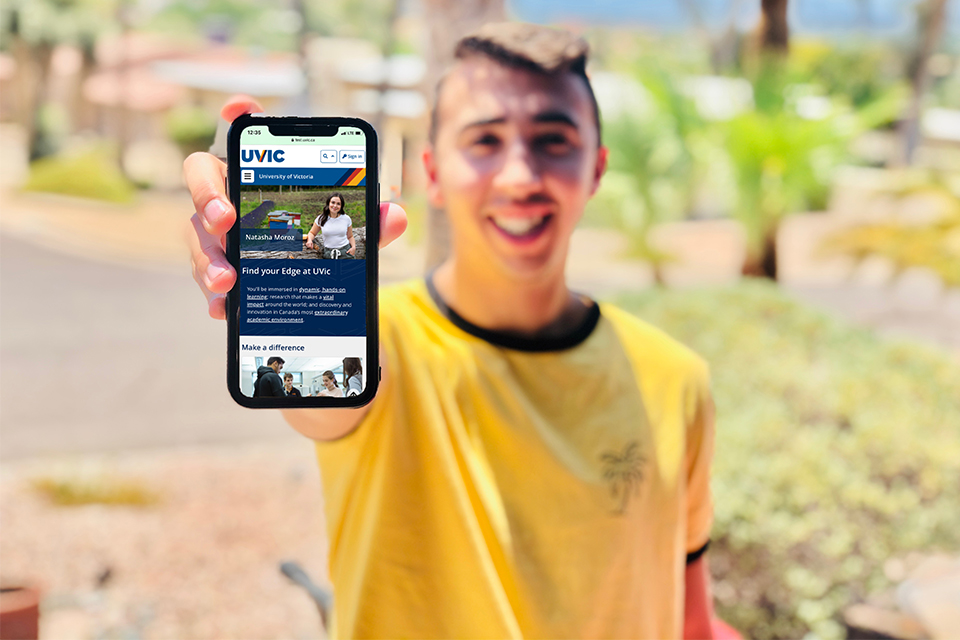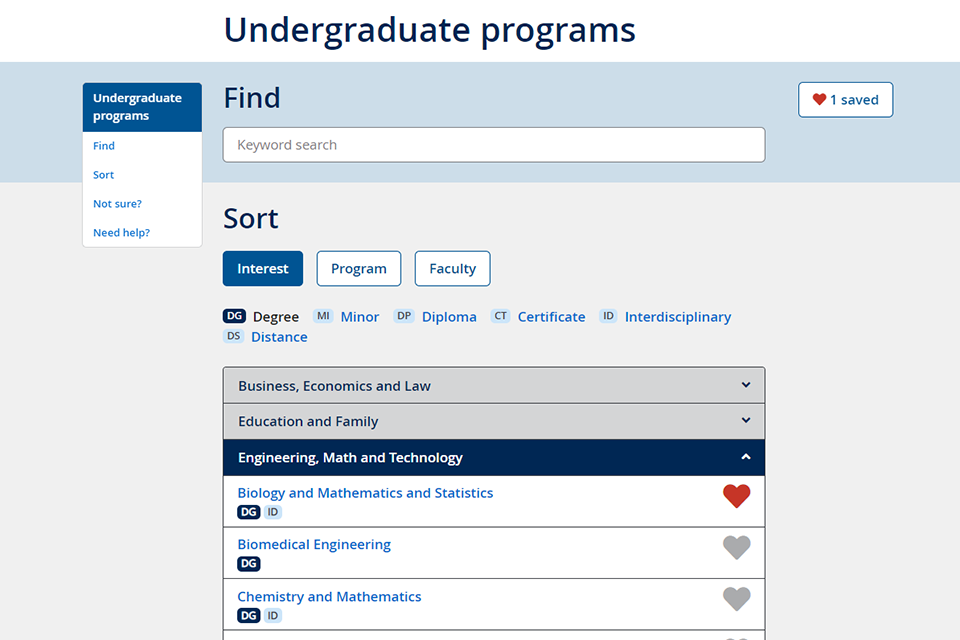New uvic.ca launches
- University of Victoria

UVic launches a new central website August 5. It’s clean, simple, searchable, mobile-friendly and task-driven. It also rates as one of the top websites in Canada for accessibility, usability, and search-engine optimization.
Today almost everything is accessed online out of necessity due to COVID-19 safety protocols. On the new website you’ll find the answers you need—whether you’re sitting in your backyard using your mobile, in a rural community using a dial up connection, or accessing the website from another country or time zone.
A cross-campus project
The website redesign project was led by University Communications + Marketing (UCAM) in partnership with University Systems, guided by a project leadership team of more than 20 leaders from across campus and supported by the contributions of hundreds of staff from a range of university units.
The new website also reflects extensive user interviews, testing, and research into best practices.
The resulting new site was built on those findings: we’ve made evidence-based decisions; prioritized a mobile-first experience; improved accessibility and searchability, reduced content and duplication, and incorporated industry-leading best practices.
Building for accessibility from the ground up
It’s more than just a facelift. The new website’s foundation has been updated to make it lightweight, modular and fast. Those powerful building blocks make it easily adaptable to modern devices and accessible to everyone.
Just over 20% of Canadians have some form of disability. The project team collaborated with UVic’s Centre for Accessible Learning and invested in industry-leading tools to build a fully accessible website.
The right content in the right place
The website’s mobile-first design is built with search engine optimization (SEO) at its core, targeting Google’s mobile-only ranking system.
According to Len Collins, Information Architect & User Experience Specialist for UCAM, “Users are looking for specific things and over 80% of the time they’re going to use search, often with a voice command. Search has become the way we find content. So we wanted to make sure our content is easily translatable, easily findable, and in simple, spoken English.”
Website content has been dramatically reduced and improved so it can be easily read, scanned, and searched. Duplicated content has been removed altogether, carving a clear path to the most relevant page for any given query.
We heard a very consistent thread when interviewing UVic front line staff. Half of their day was spent replying to frustrated students who were unable to find basic information on the website, like fees and deadlines. We don’t want to waste our student’s time getting them answers that they could have found through self-serve.
—Len Collins, Information Architect & User Experience Specialist for UCAM
The goal is for undergraduate students to find all the information they need to compare programs on just one page – a vast improvement over the anywhere from seven to 11 different pages they had to visit in the previous university website. When they answer a few questions, they can get personalized information about course requirements, tuition feeds, and transfer credit requirements. They can also “favorite” their top programs.

Graduate student admissions information, once housed on the Faculty of Graduate Studies website, has also been better integrated with UVic’s central site. Potential graduate students can find admissions and program information in one place, alongside a new directory of graduate supervisors and information about UVic’s research strengths.
Resources for Indigenous and international students, and for students with a disability are also featured on the new central sites.
Keeping you on task
The new website is now transactional, streamlined to provide important information in real time. But it’s just one part of UVic’s online ecosystem.
The university will continue to use social media, UVic News and the Online Academic Community to provide media-rich, visually compelling stories to our community.
The website will instead focus more on task-based behaviour—meeting the needs of potential students looking for the right place to achieve their potential, current students looking for resources, faculty and staff accessing the university’s many technologies, and community members who might be looking for something as simple as a cup of coffee on campus.
Read the UVic.ca preview article to learn more about this three-year project and its impact on UVic faculty and staff.

